Discover the best eats in Tokohu’s largest city with our comprehensive Sendai food guide. From the famed gyutan to green gyozas, there is so much to indulge in!
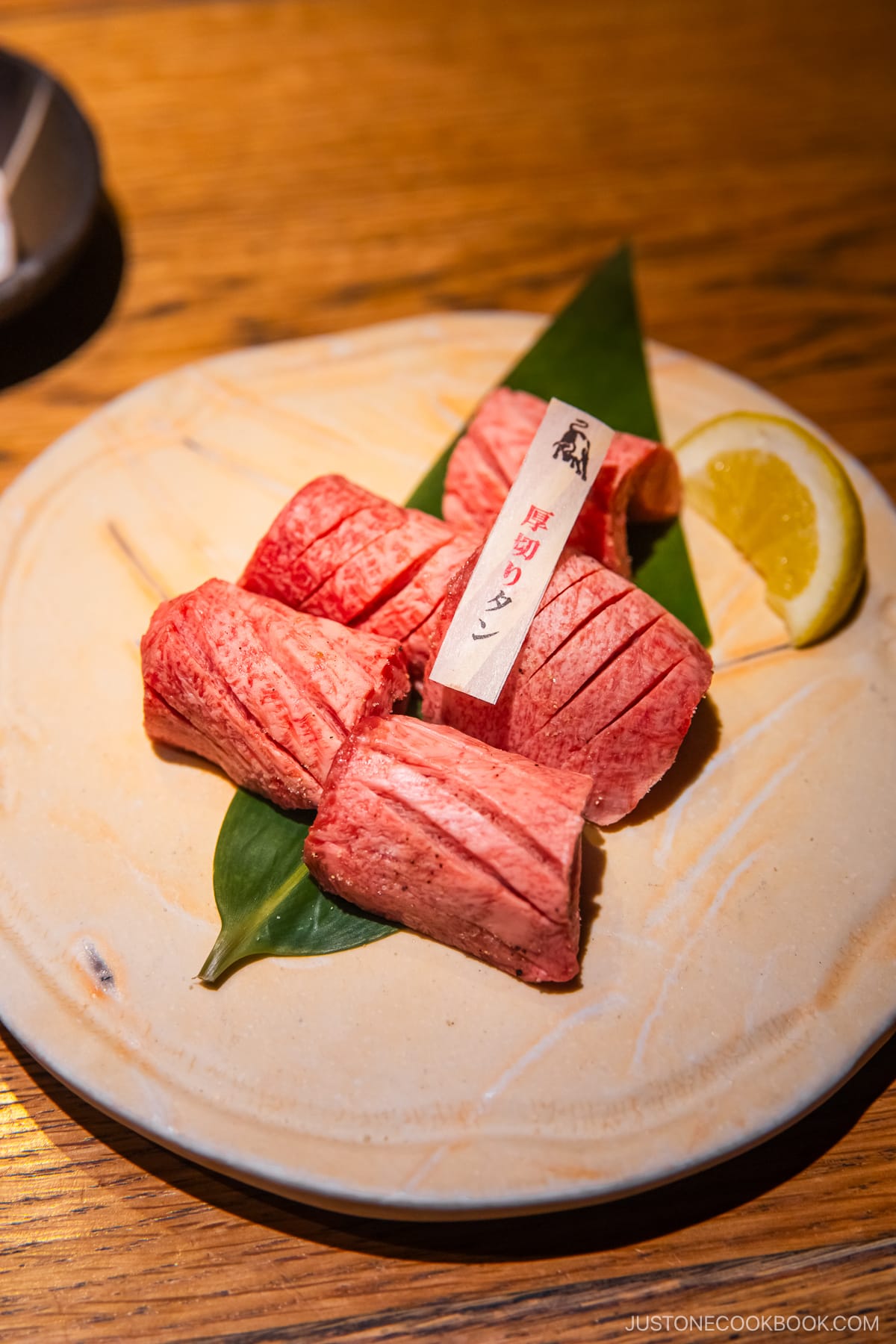

Sendai, the capital city of Miyagi Prefecture and the largest city in Tohoku is known as the gateway to northern Japan. Just a one-and-a-half-hour shinkansen ride from TokyoSendai has a rich history and food culture, making it a must-go destination on your next trip to Japan.
We’ll explore Sendai’s local delicacies and give you some tips and insider knowledge on where to find them in this Sendai Food Guide.
Beef Tongue (Gyutan)
Beef tongue, also known as street in Japanese (牛タ), is Sendai’s most famous delicacy. During the 1950s, straight after the war, the late Keishiro Sano, the first owner of the renowned restaurant “Aji Tasuke,” started to grill beef tongue. During that period, many American soldiers stationed in Sendai often ate beef but discarded the tongue. Japan’s mottainai (do not waste) culture inspired Sano to simply grill the beef tongue and serve it alongside tail soup and barley rice. Due to food shortages at the time, barely rice was used for its high nutritional value and ease of filling the stomach.
Gyutan quickly gained popularity and with good reason. Simply grilled over charcoal with salt, you can enjoy the slight crunch and tenderness of the tongue. It is often paired with various pickles to add a deeper flavor but also to help cut through its meatiness.
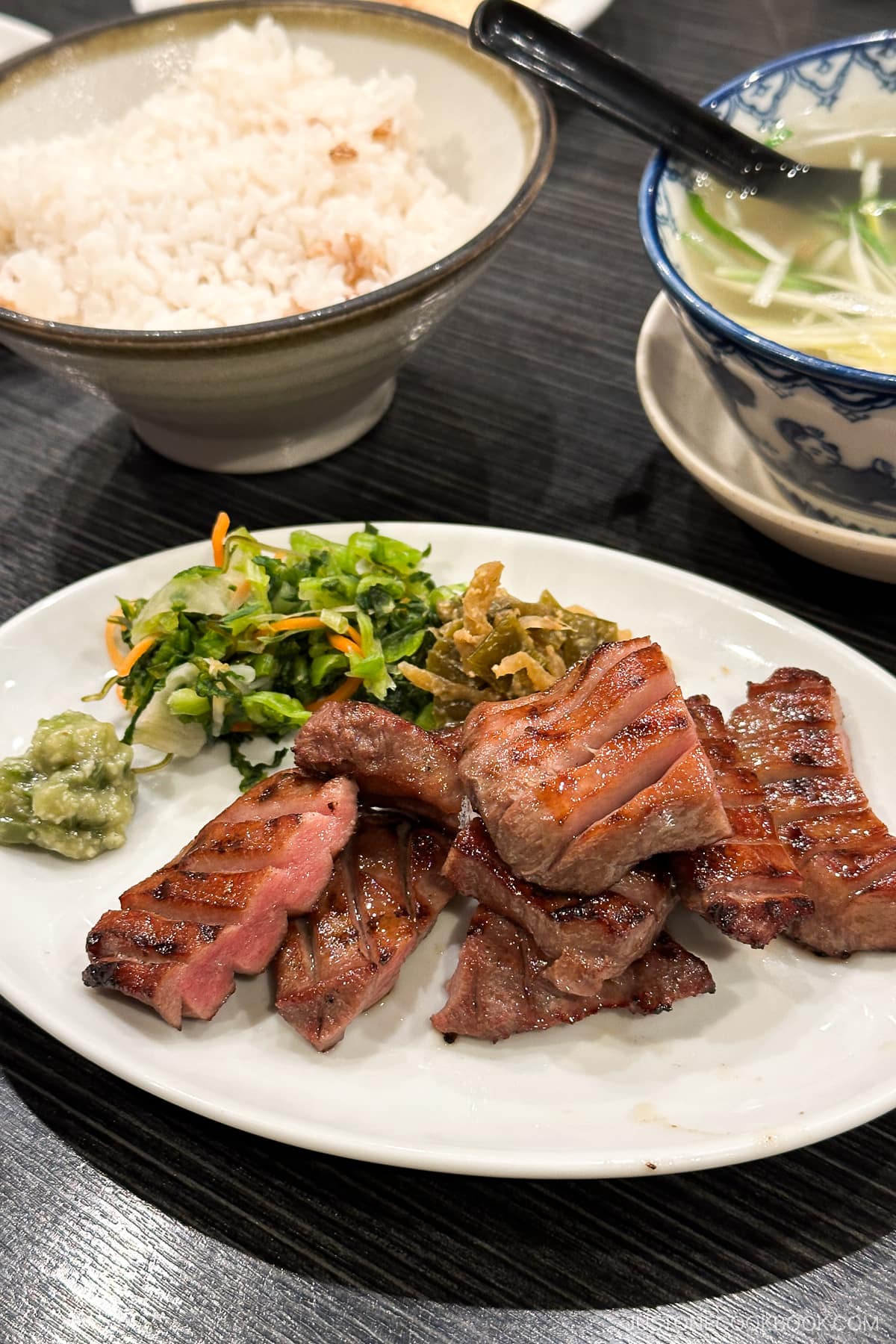

If there is one dish you must try in Sendai, it is gyutan. You can find specialty shops all over the city that can be difficult to choose from. Heading to gyutan’s origins at Aji Tasuke is an easy choice, but it can also be crowded. Gyutan Tsukasa is another fantastic option, close by Sendai Station. It offers gyutan set meals as well as gyutan sausages, meatballs, and a whole assortment of delicacies that will tantalize your taste buds.
the probe
The Tohoku region is a major producer of edamame or young soybeans. While they are typically enjoyed as a snack alongside a cold glass of beer, you can also find them mashed up as zunda. Made by boiling, mashing, and seasoning edamame, zunda can be found in various sweets, desserts, and drinks!
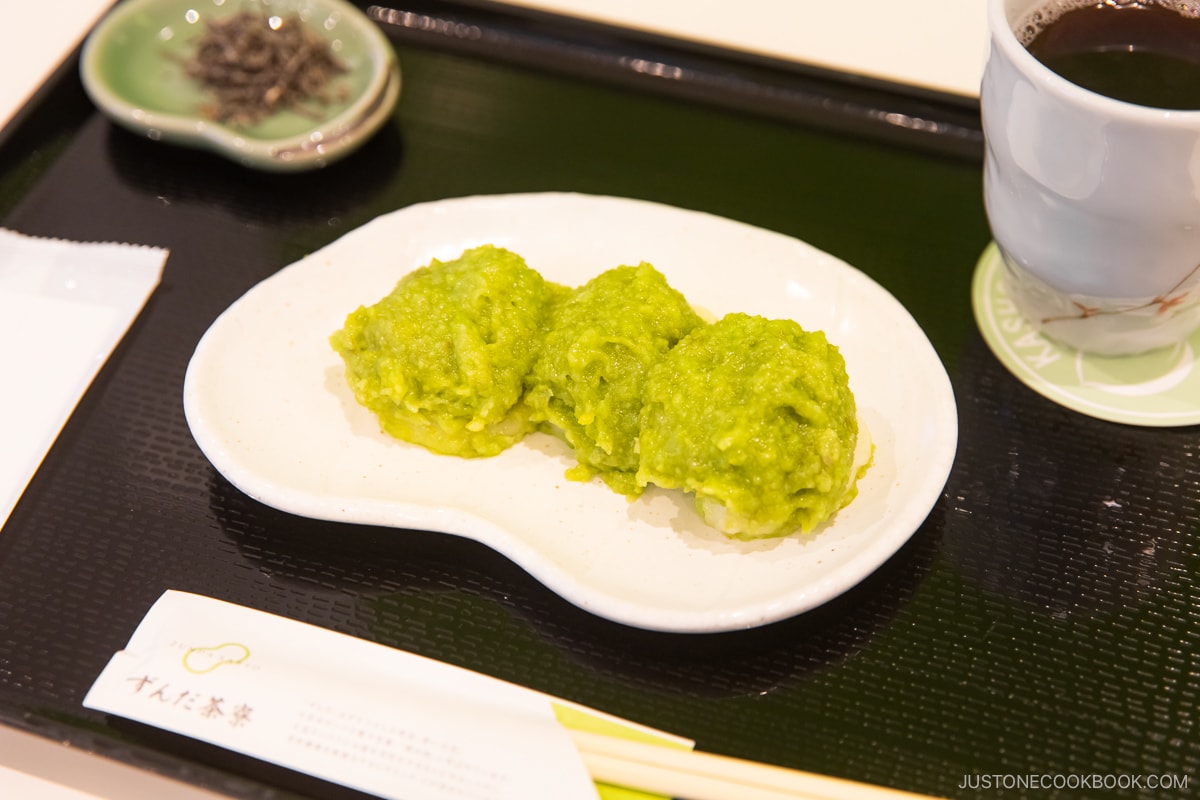

When you arrive at JR Sendai Station, head to Zunda Saryowhere you can enjoy their famous zunda shake and zunda mochi! They even offer zunda soft serve and parfaits if you are in the mood for sweets. When wandering the station, you’ll also be able to find some zunda mochi boxes, which make for the perfect Sendai souvenir!
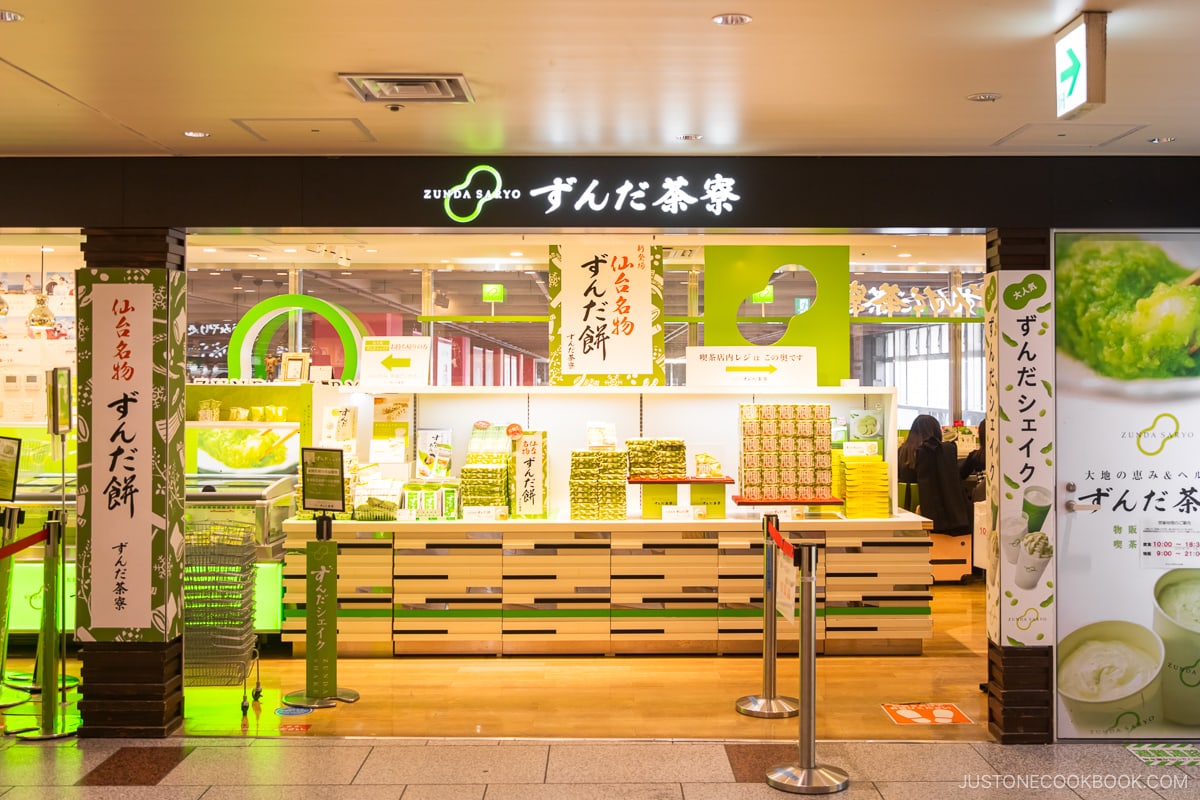

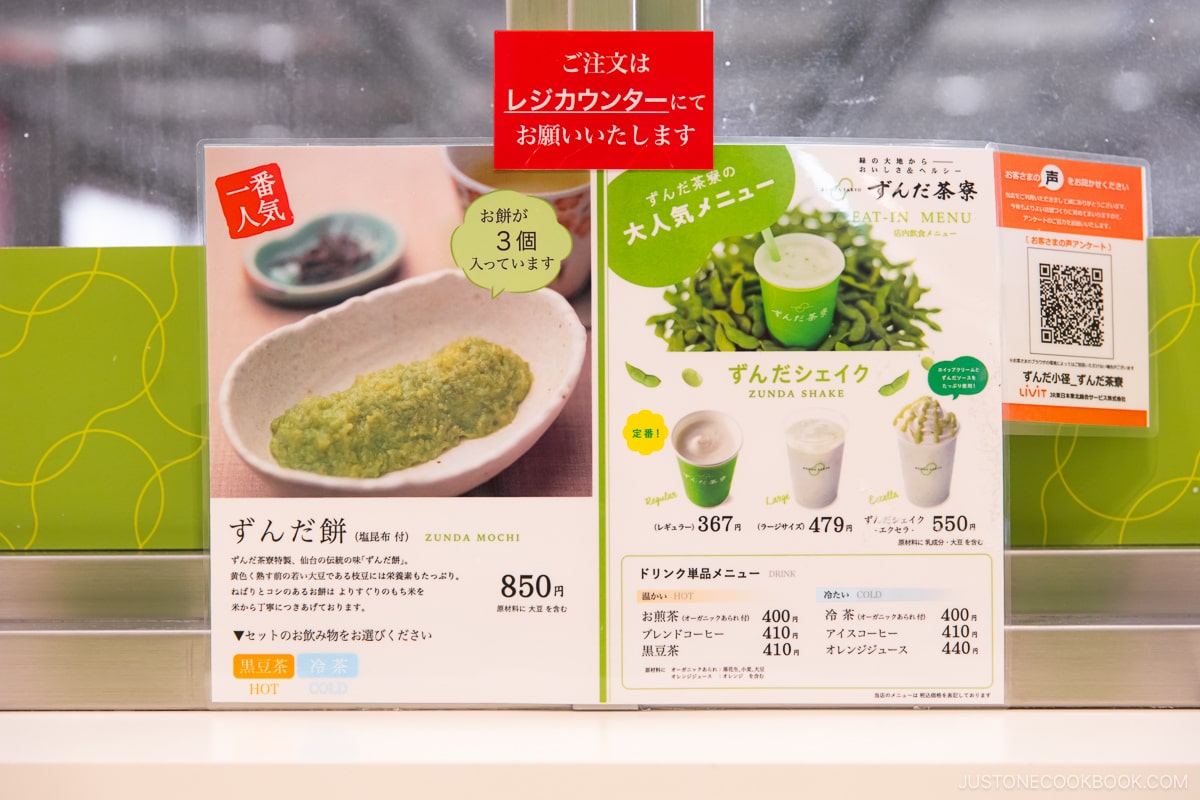

Zundai was said to have originated from one of Japan’s most famous samurai, Date Masamune, who founded the Sendai area. While on the battlefield, Date crushed his edamame using the handle of his sword, known as a Jindachi. He served the crushed edamame to others alongside some mochi, earning the name Jindachi Mochiwhich eventually became zunda mochi.
Sendai Beef
Although it may not be widespread, Miyagi Prefecture has a thriving livestock industry. While the national average number of animals per farm is 62, in Miyagi, that number is less than half at 28. There are many small-scale farmers raising each animal with care and time. In addition, Miyagi is a rice-producing region with little rainfall and dry weather in autumn. This results in the production of high-quality rice straw, which is a key factor in producing marbled beef.
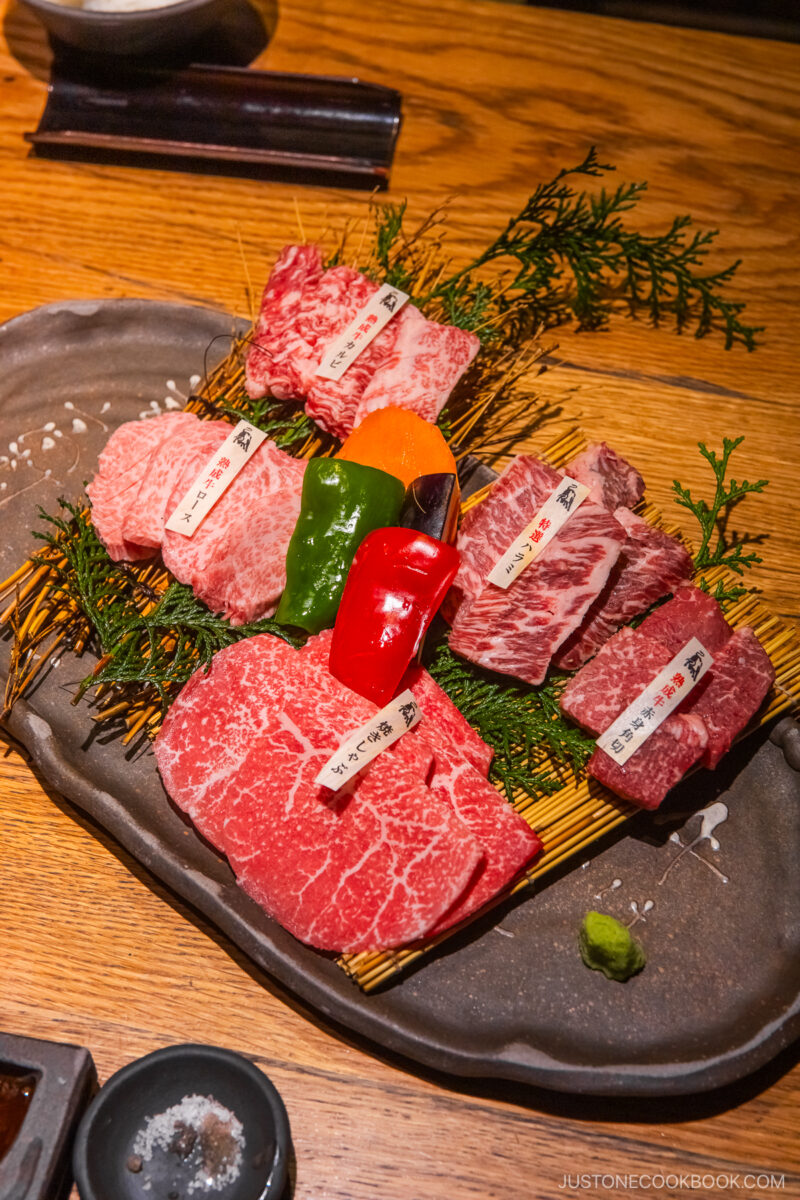

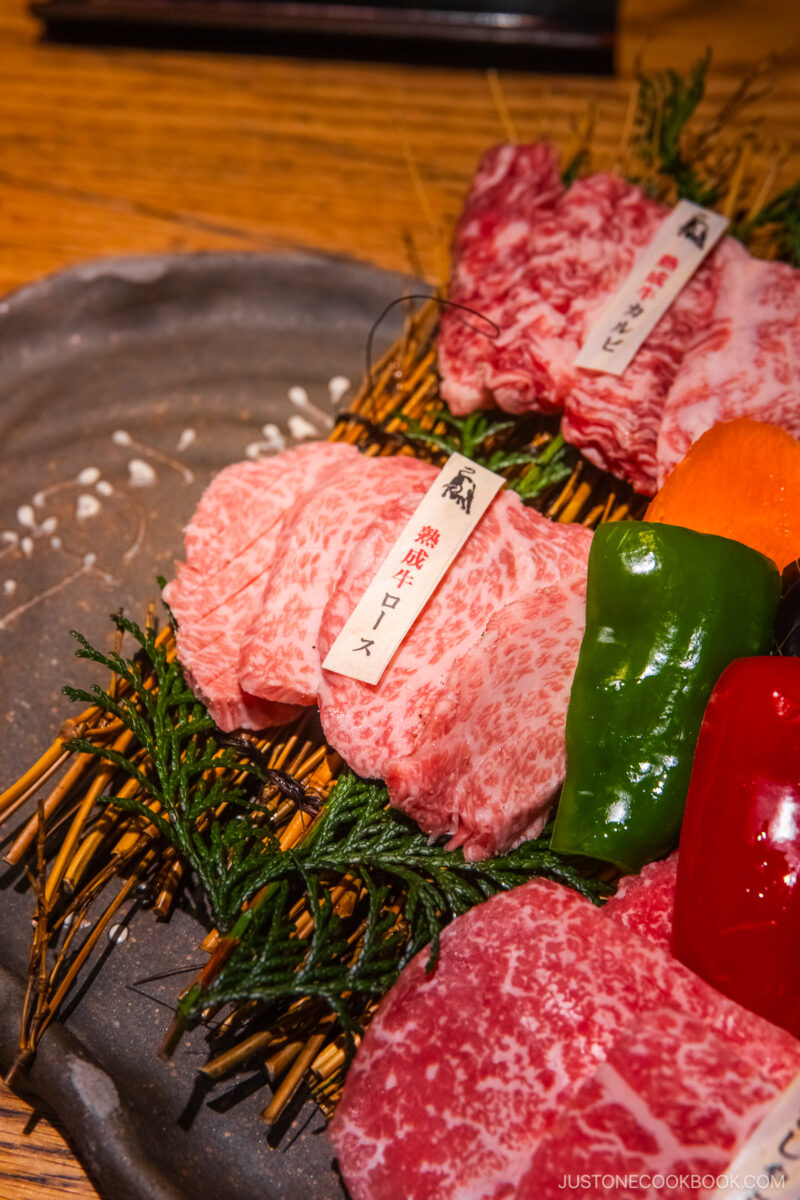

When people think of beef, particularly wagyu, the first thought is Kobe beef. However, Sendai beef is just as delicious and is characterized by its soft texture, mellow flavor, and rich meat.
While many steakhouses offer Sendai beef, we recommend I’m sure (Japanese BBQ). You can enjoy various cuts, from skirt and sirloin to tongue and ribeye, with salt, wasabi, or a yakiniku sauce. Head to Yakiniku Gyujin Ichibancho for a luxurious and unforgettable meal filled with local Sendai beef.
Oysters
The Sanriku Coast along Miyagi Prefecture is one of the world’s three major fishing grounds, with some of the finest seafood in Japan. Oyashio and Kuroshio currents meet in the Sanriku Sea, creating plentiful supplies of plankton that attract migratory fish all year round. The calm waters are also ideal conditions for wakame and kombu farming, as well as scallops and oysters.
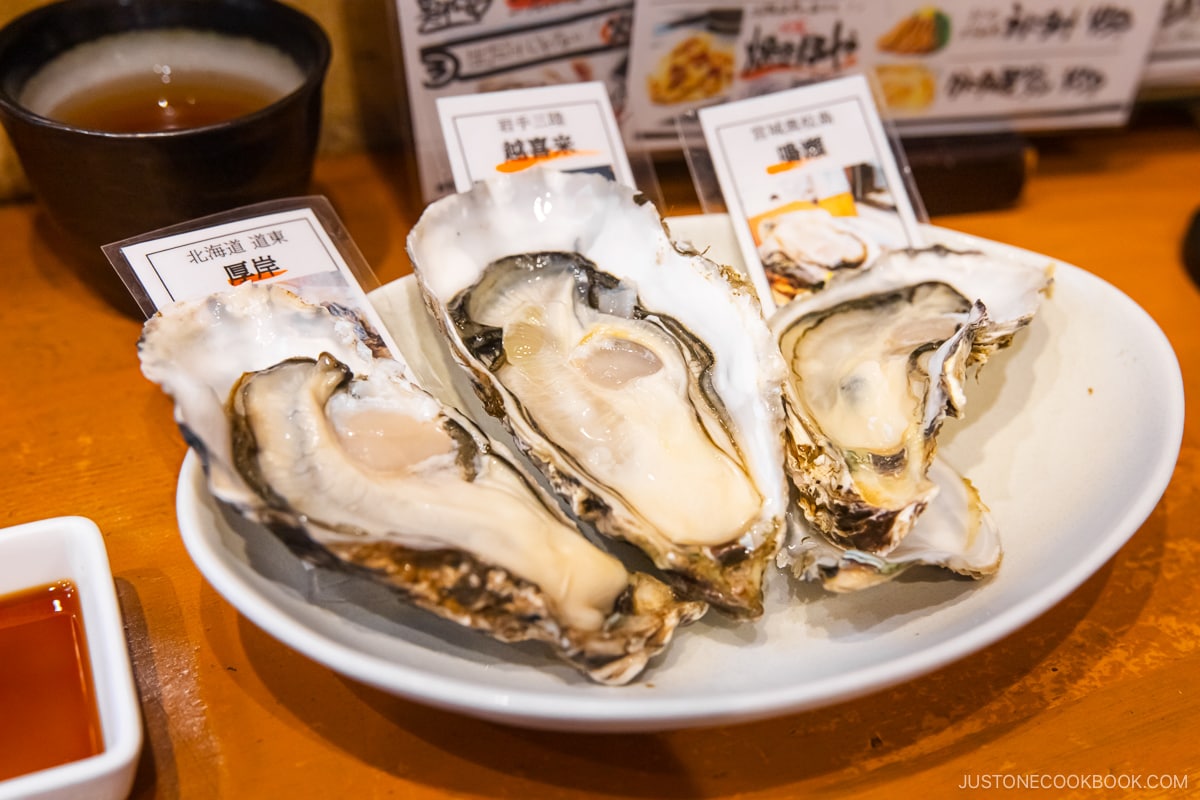

The port town of Matsushima, just a 50-minute drive from Sendai, is famed for its oysters. If you can’t visit Matsushima, you can enjoy the oysters in various restaurants and izakayas across Sendai City. For those who love oysters, we recommend heading to Kakiya no Kakiya. It is a small oyster bar with a small menu comprising of all kinds of oysters! For lunch, they have oyster teishoku (set meals), including fry legs (deep-fried oysters) or raw oysters with a small side of kaisendon (fresh seafood rice bowl).
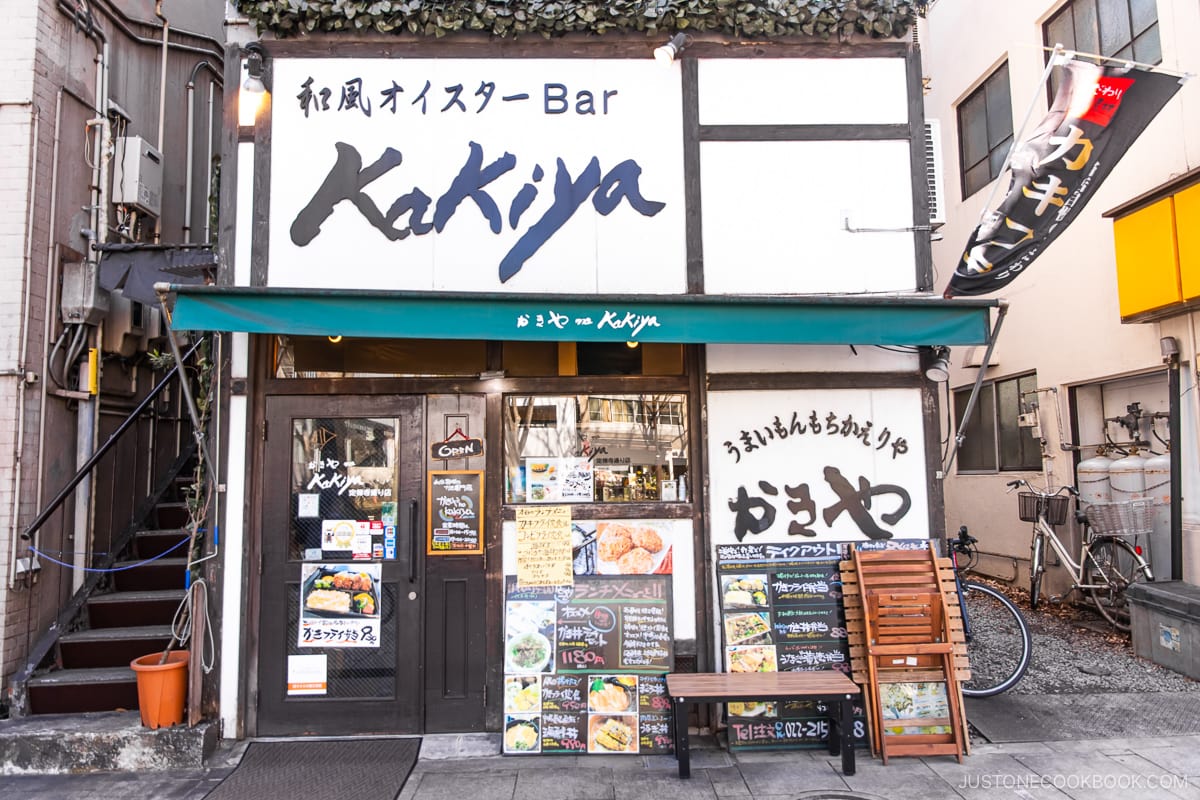

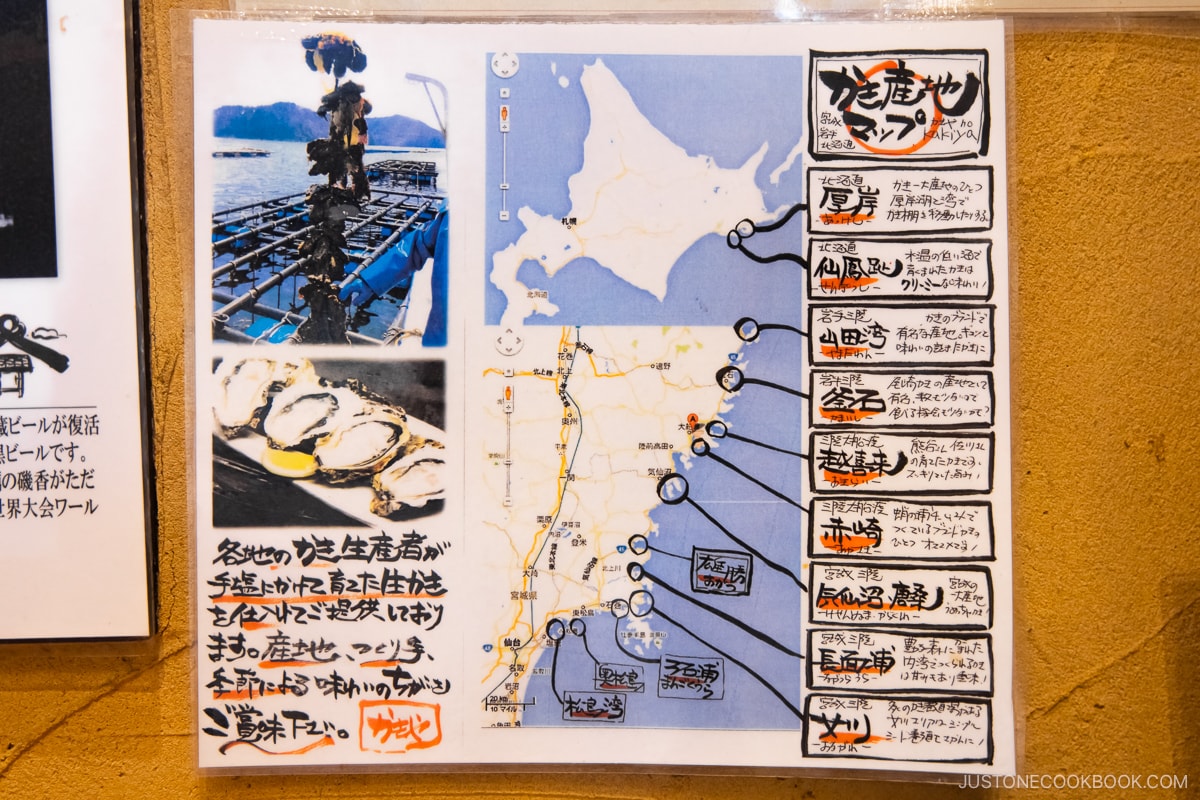

You can also pick up a plate with carefully sourced oysters from around Japan, including the famed Matushima ones! Enjoy, taste, and compare how the sweet and cream oyster’s tastes change from region to region! They also have a range of sake to pair for those who want a drink!
Sasa Kamaboko
Speaking of delicious seafood, sasa kamaboko is next on our list. During the early Meiji Era (1868-1912), there was an excess supply of flounder. However, with insufficient storage facilities and transportation, many of them were thrown away. To combat the waste, people started to grind the flounder meat into a fish cake. It is now known as sasa kamaboko (笹かまぼこ), or bamboo leaf fish cake.
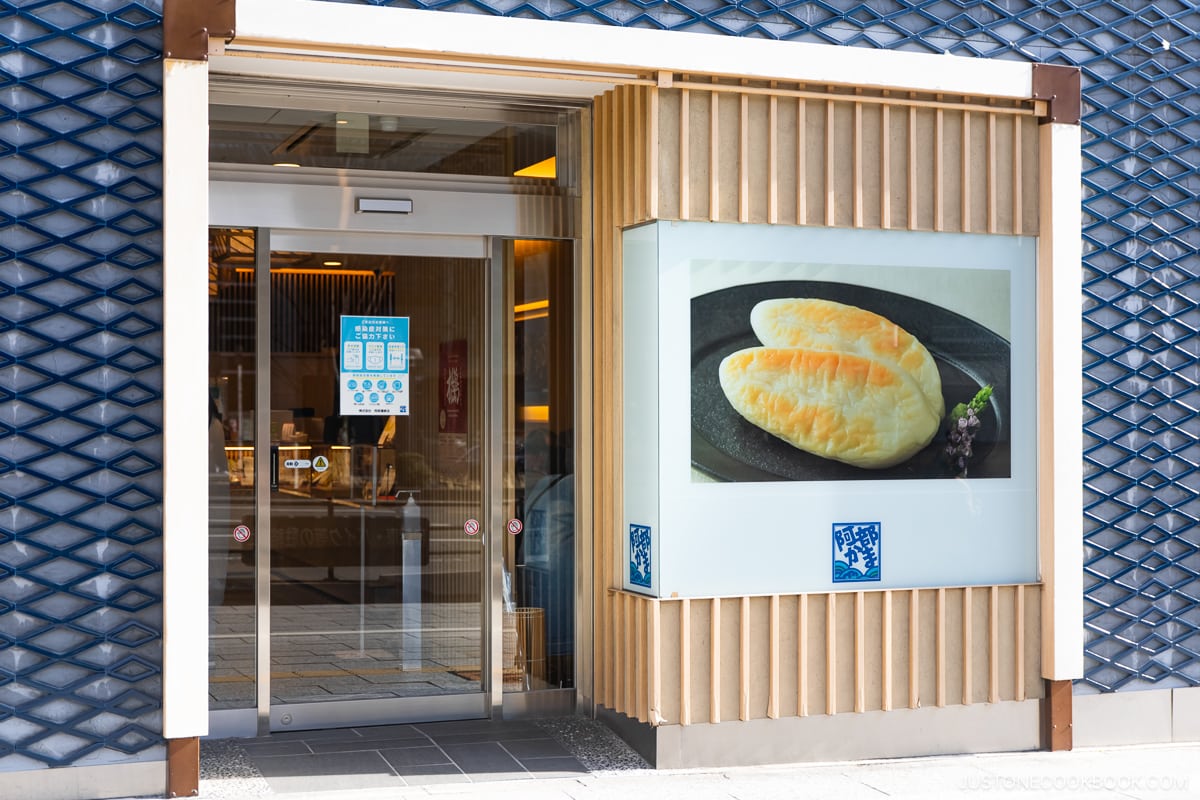

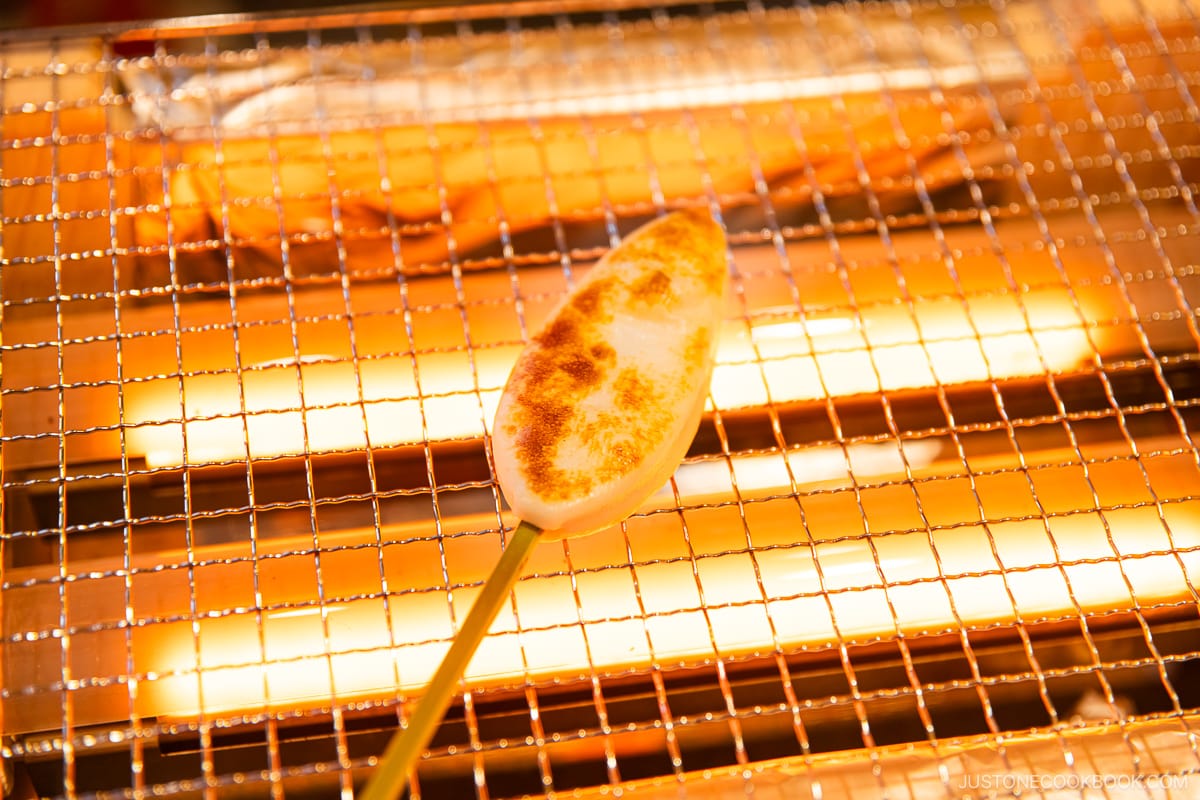

Head to Abe Kamaboko-ten to pick up some sasa kamaboko souvenirs, or try grilling them yourself! You can purchase sasa kamaboko on a stick at the counter and use the in-store grills to add a delicious char and smokiness to them.
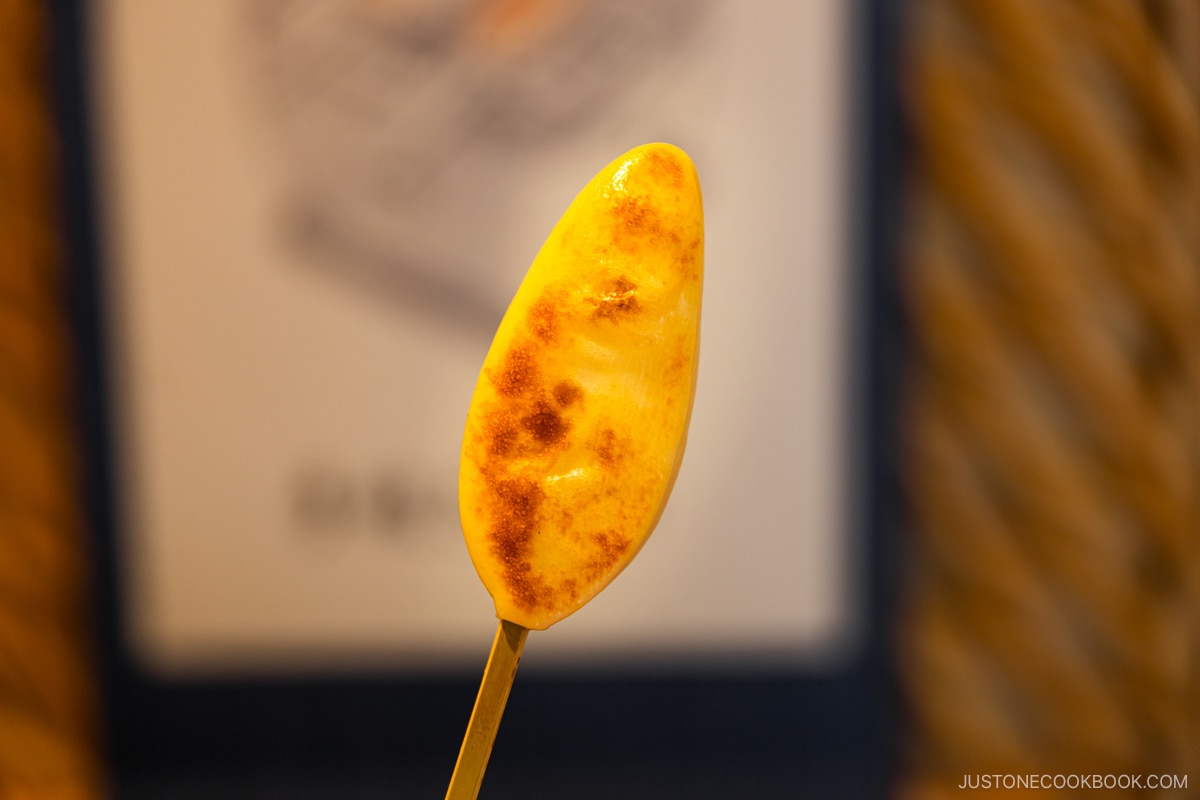

You can also try the Hyotanage, which are fish cakes coated in batter and deep-fried till golden brown on the outside and juicy on the inside.
Aoba Gyoza
Aoba Gyoza, or green leaf dumplings, are characterized by their vivid green color. It has a distinct color from Sendai yukina, a green leafy vegetable that is unique to the area. The gyoza skin is often thicker than traditional gyoza, adding a slightly chewier texture. The filling is also similar but often contains extra yukina, making it healthier and lower in calories!
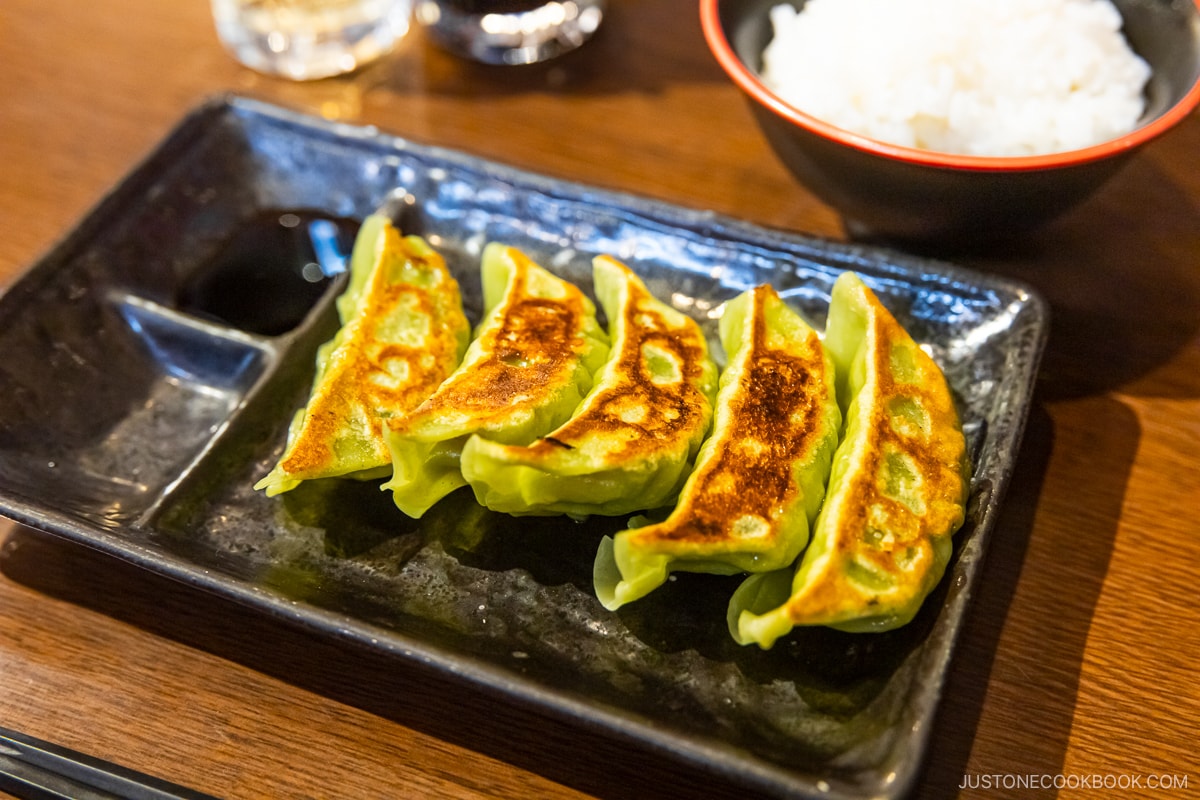

You can find the delicious green gyoza in various restaurants and izakayas throughout the city, but we recommend heading to Ichiban Goro Ramen restaurant. Enjoy a steaming bowl of ramen alongside some earthy and delicious aoba gyoza!
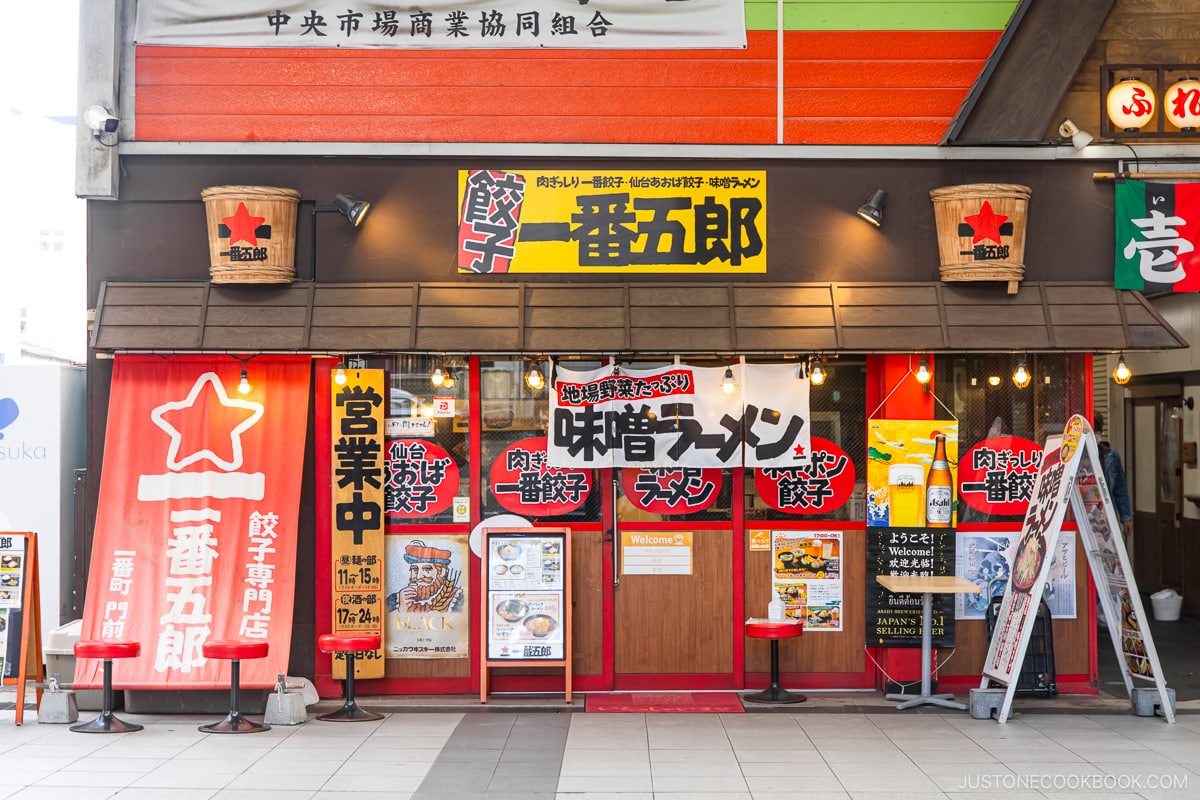

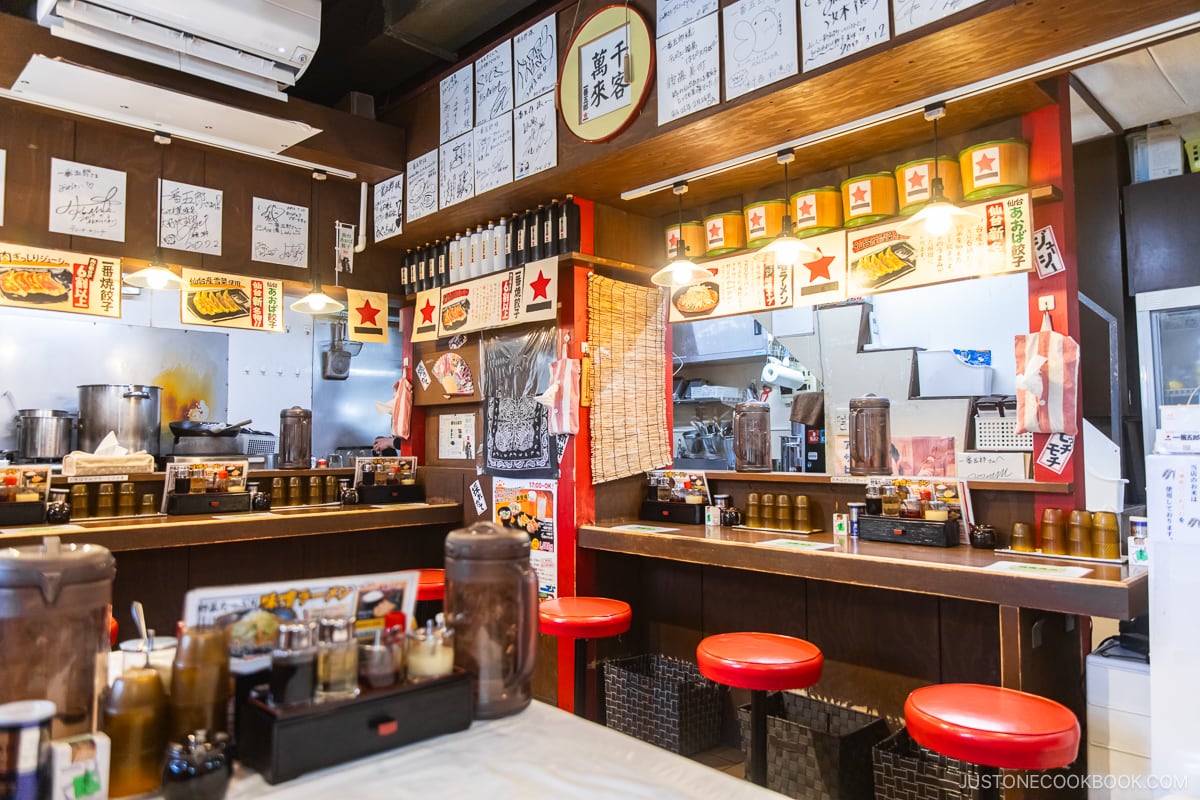

Did you know that Aoba translates to “green leaf,” but it also represents Sendai as it is known as the “City of Trees?”
Hiyashi Chuka
Hiyashi Chuka is a classic summer cold noodle dish that is said to have originated in Sendai! During the summer of 1937, as the ramen sales started to drop because of the heat, members of the Sendai Chinese Cuisine Industry Association (currently the Miyagi Prefecture Chinese Beverage Industry Association) created a cold noodle dish called Ryanbanmen. At first, the dish consisted of chilled noodles with boiled cabbage, salted cucumbers, carrots, and chashu pork. But after the war, as supplies became more available, a modern style with luxurious toppings can now be enjoyed with thinly sliced pork fillet, cucumber, ham, eggs, and jellyfish.
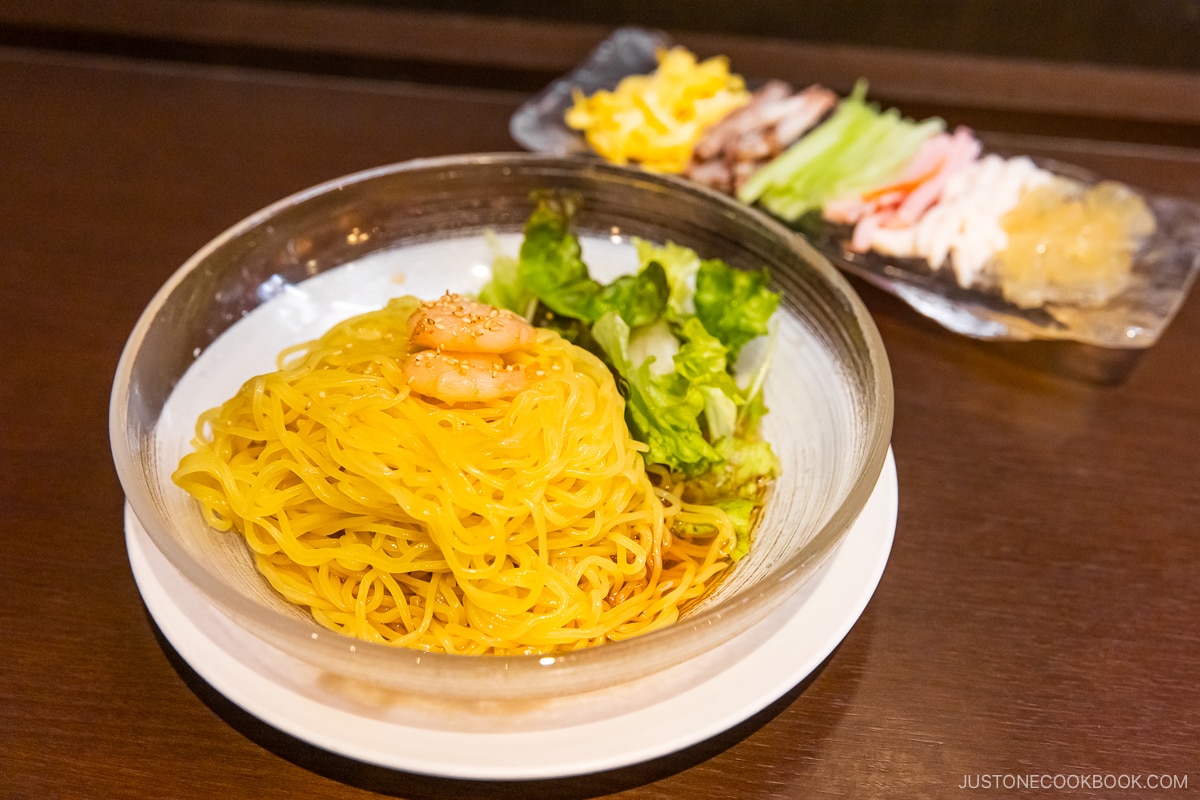

As the noodles become chilled, they become chewier in texture and are served alongside a refreshing soy sauce-based sauce or a rich sesame sauce.
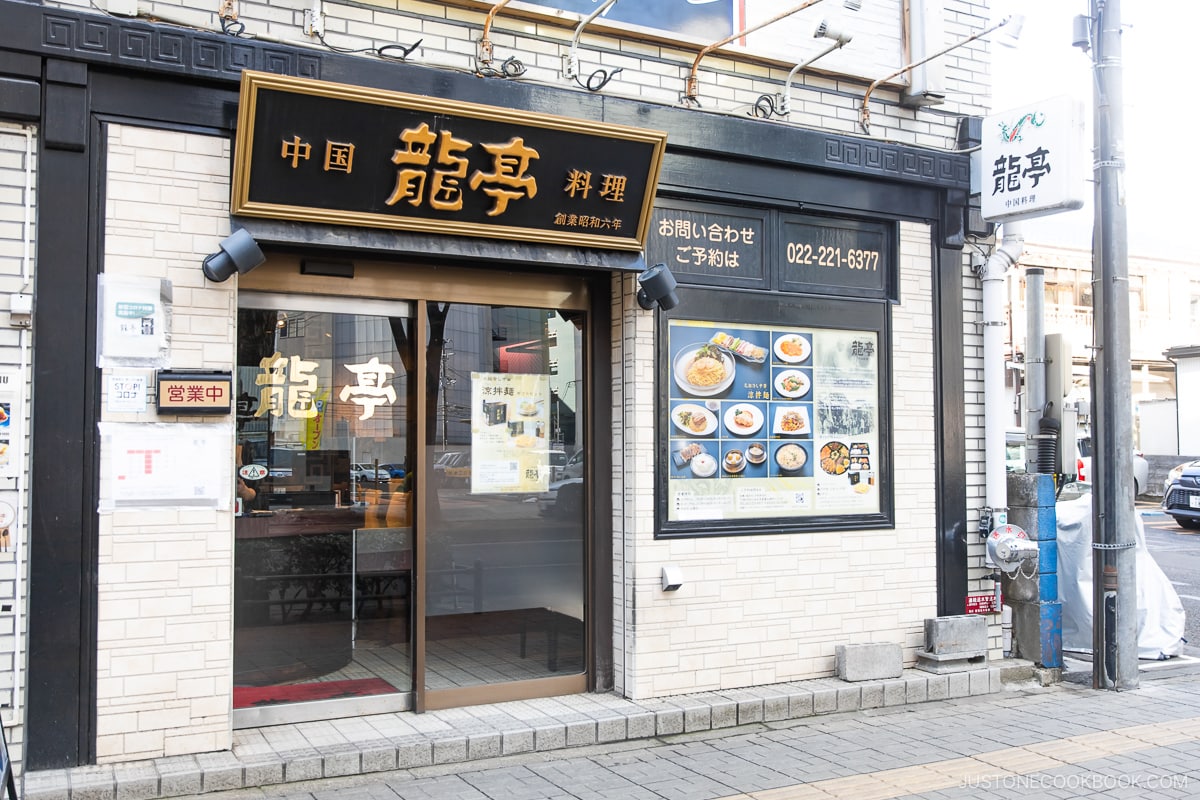

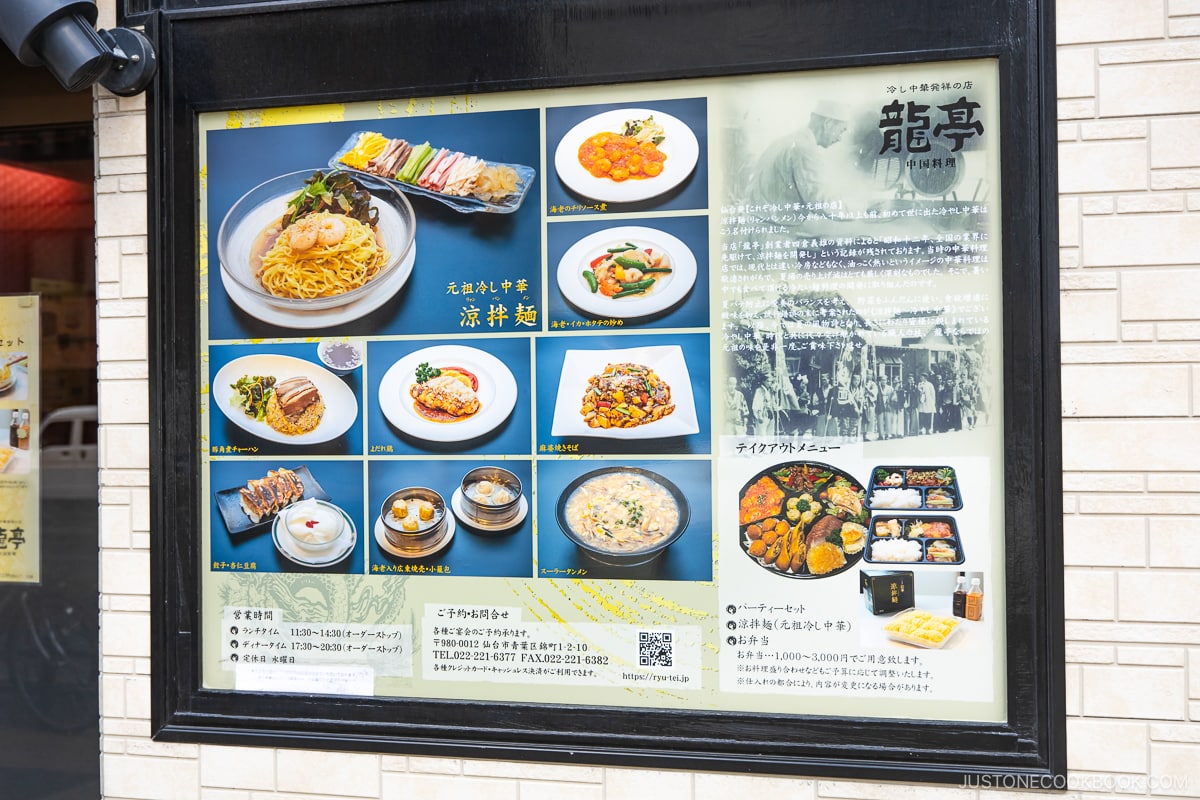

At Ryutei, the original Hiyashi Chuka restaurant, you can choose from either sauce, which comes with all the colorful ingredients on the side, so you can pick and choose how you want to eat. Although it is designed as a summer dish, Hiyashi Chuka is delicious all year round!
Nabe Series
Miyagi Prefecture ranks as the number one produce of seri, or Japanese parsley, and is known for its distinct earthy flavor and edible roots. During winter, seri is added to must not (hot pot) with a soy sauce-based soup made with duck or chicken stock. It adds a rich amount of nutrients and vitamins to keep you healthy during the cold but is also a textural delight.
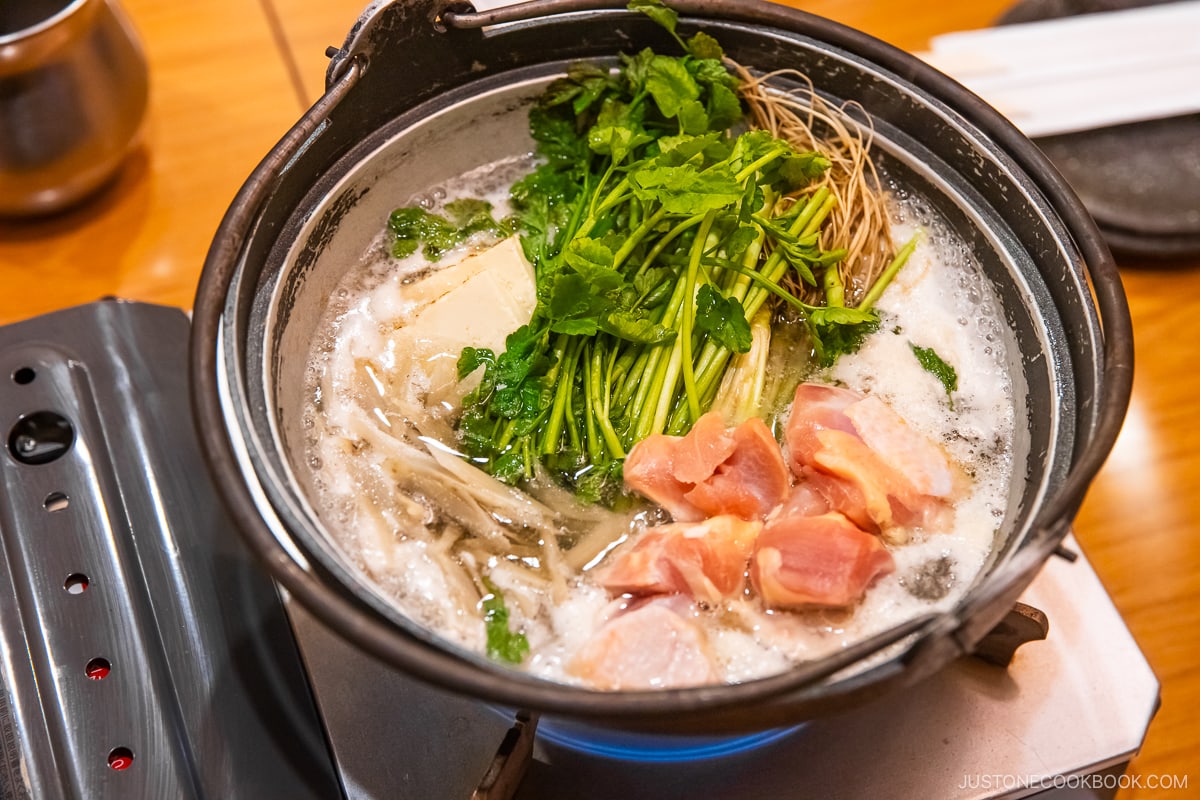

The roots are slightly crunchy, with an earthy taste, while the upper stems are soft, almost chewy, with a herbaceous and bitter taste. It comes with a side of chicken or duck and Other typical nabe ingredients such as tofu and negi (long green onions), but it varies from shop to shop.
You can find seri nabe in many specialized restaurants or local izakayas. One popular restaurant is Serisoan Sendai-Ekimaewhich a local Sendai friend recommended, but unfortunately, it was fully booked for the week! Instead, we tried a local izakaya called Irori. The seri nabe came with some tofu, mushroom (burdock root), a large portion of seri, and some chicken thigh.
Sankaku Aburaage
Last on our list is Sankaku Aburaage, or triangular deep-fried tofu. Aburaage is a common Japanese ingredient used in dishes like miso soup. However, what sets sankaku aburaage apart is its thickness and triangular shape.
We decided to head to the source of sankaku aburaage, about 50 minutes from Sendai City, by car to Jogi Tofu Store. Inside you can see lots of signed papers of famous personalities that have visited to get a piece of their aburaage.
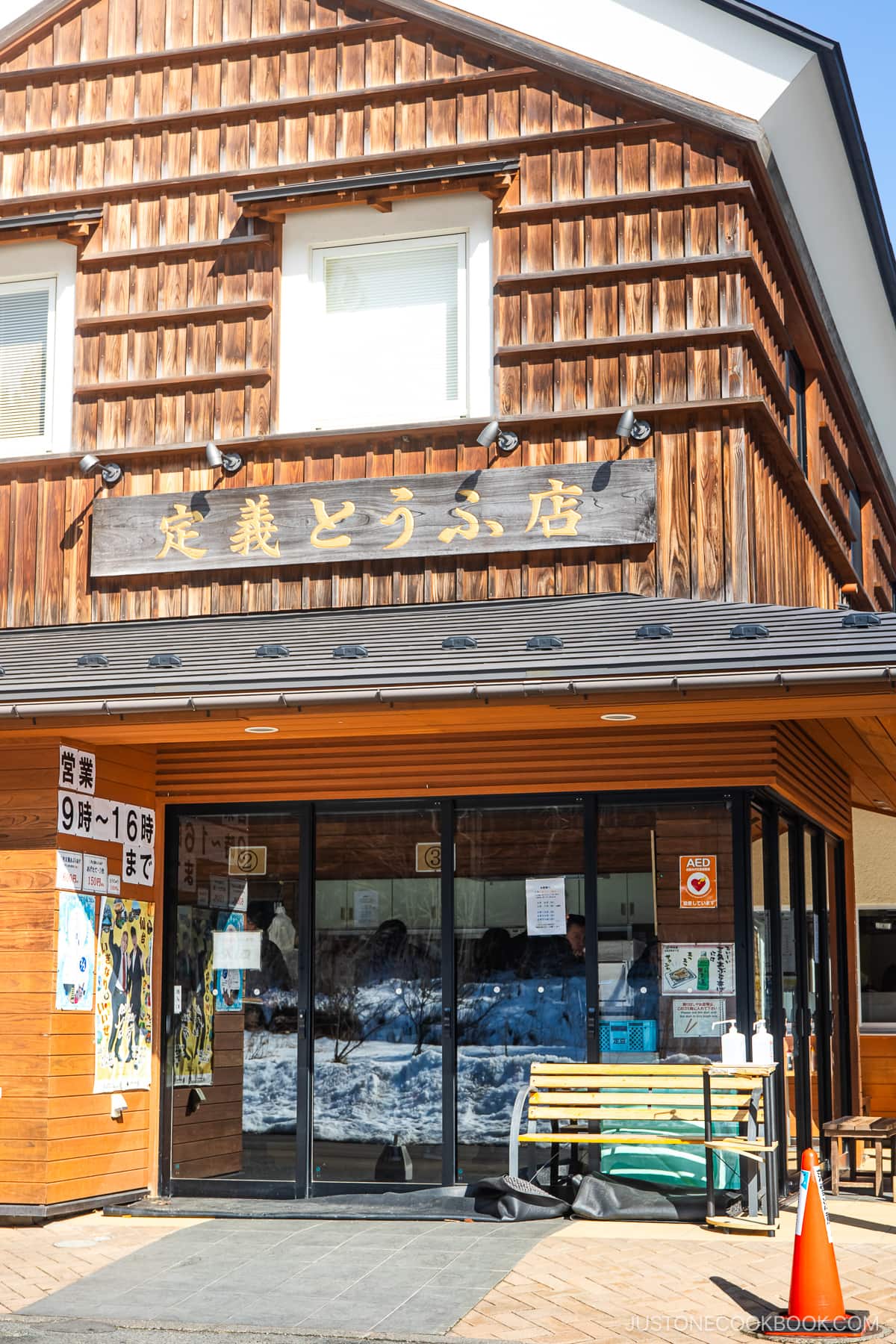

It turns out it is triangular in shape because it is the most efficient shape for frying! Their kitchen has a rectangular deep fryer, meaning that the triangular shape allows them to maximize and efficiently deep fry the most amount of tofu at once! It is double fried, once at 250°F (120°C) until cooked through and then again at 375°F (190°C) until the outside is crispy.
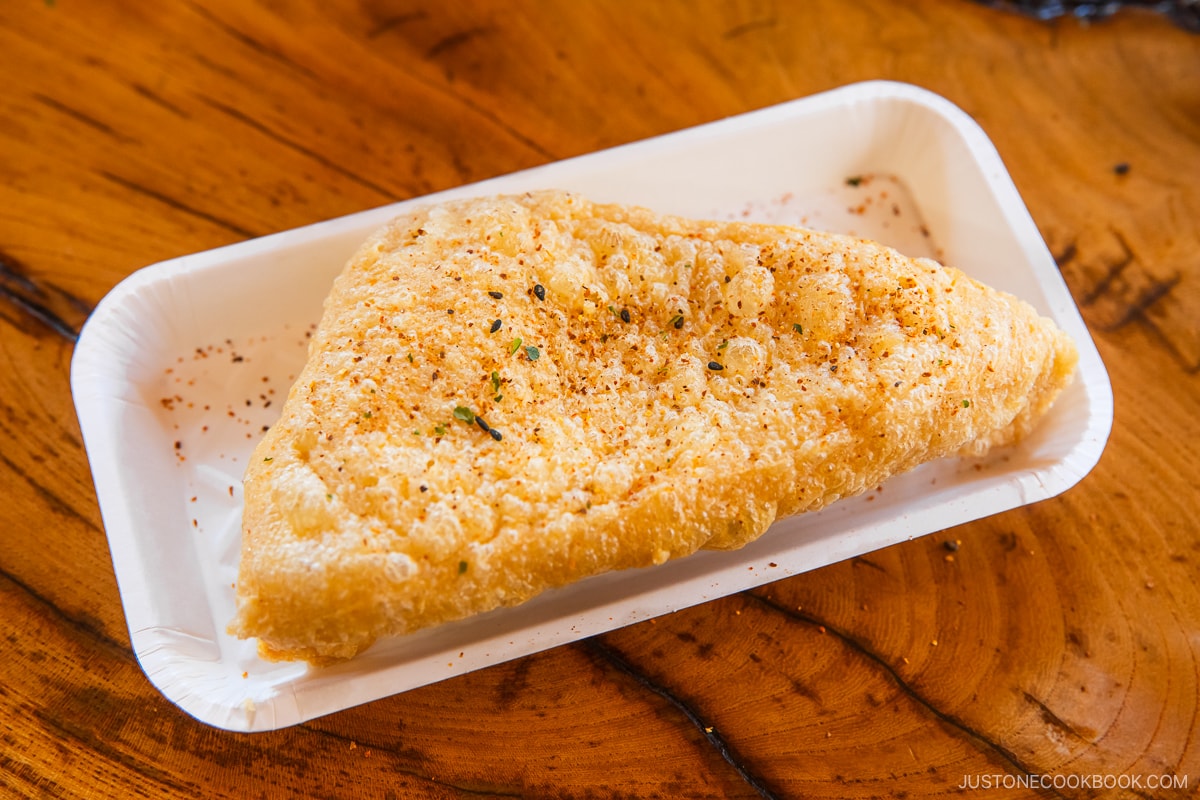

The sankaku aburaage has a delightfully crispy exterior with a chewy interior, followed by the aroma of soybeans. You can add soy sauce, garlic shichimi (seven spices), or regular shichimi as you like. It makes for the perfect snack after visiting the nearby Jogi Nyorai Saihoji Temple!
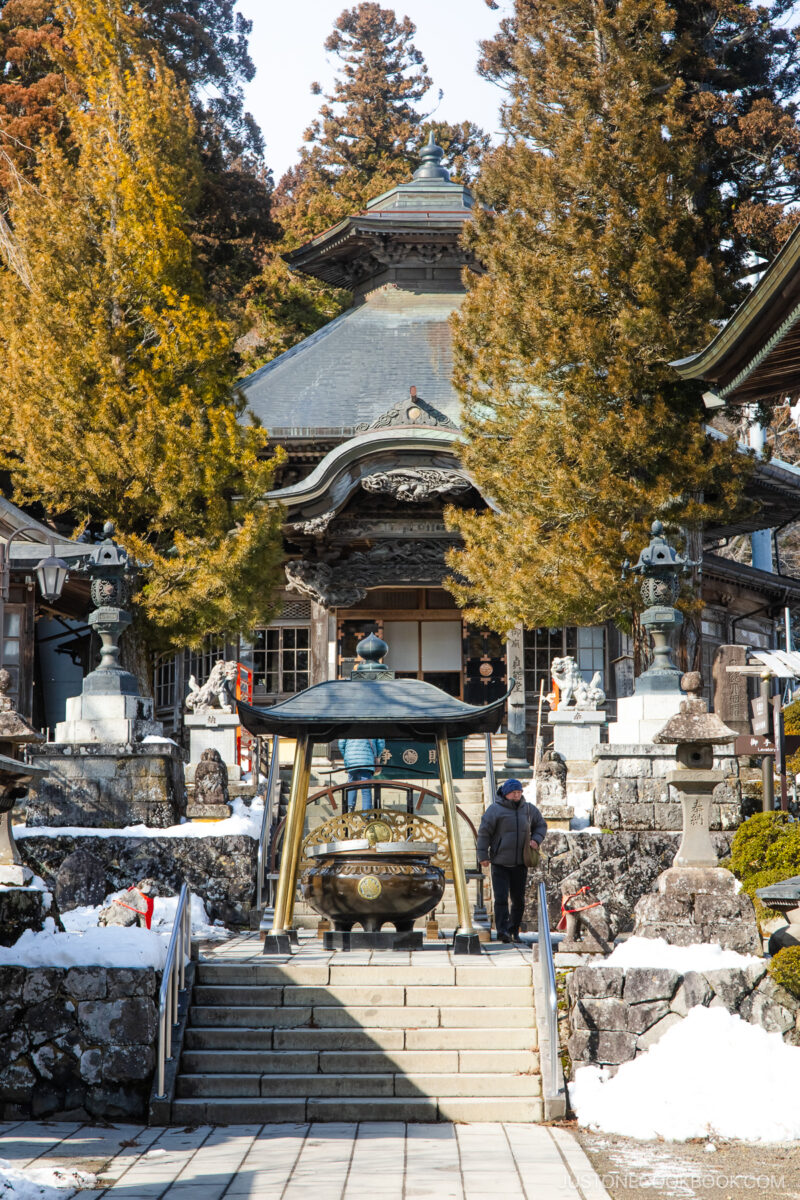

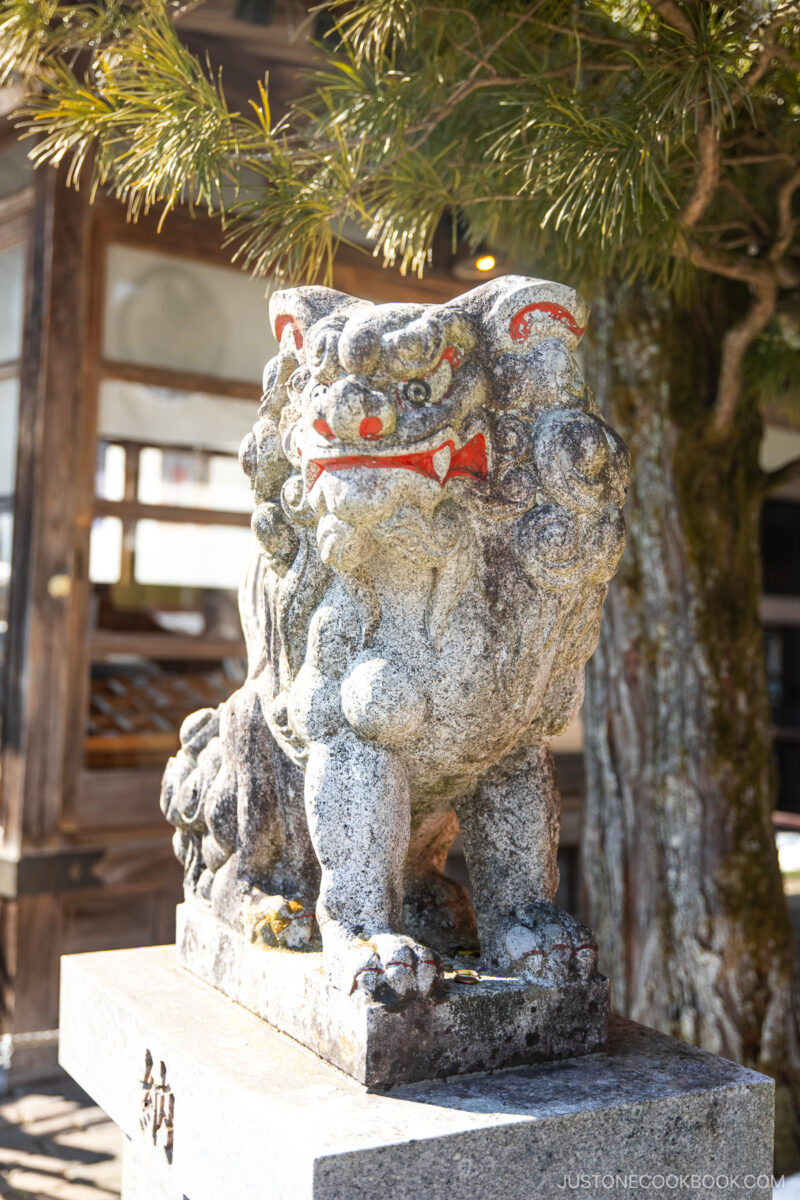

If you don’t have the chance to visit the Jogi Tofu store, you can also find sankaku aburaage in some izakayas and restaurants in Sendai City.
So that was our list of the Sendai specialties you must try in northern Japan! We didn’t even realize how rich the food culture in Sendai is apart from Gyutan, so we all hope you get the chance to visit! In the comments below, let us know what city food guide you want to see next!
If there’s any food we left off of this Sendai food guide that we should have covered, let us know in the comments below.


